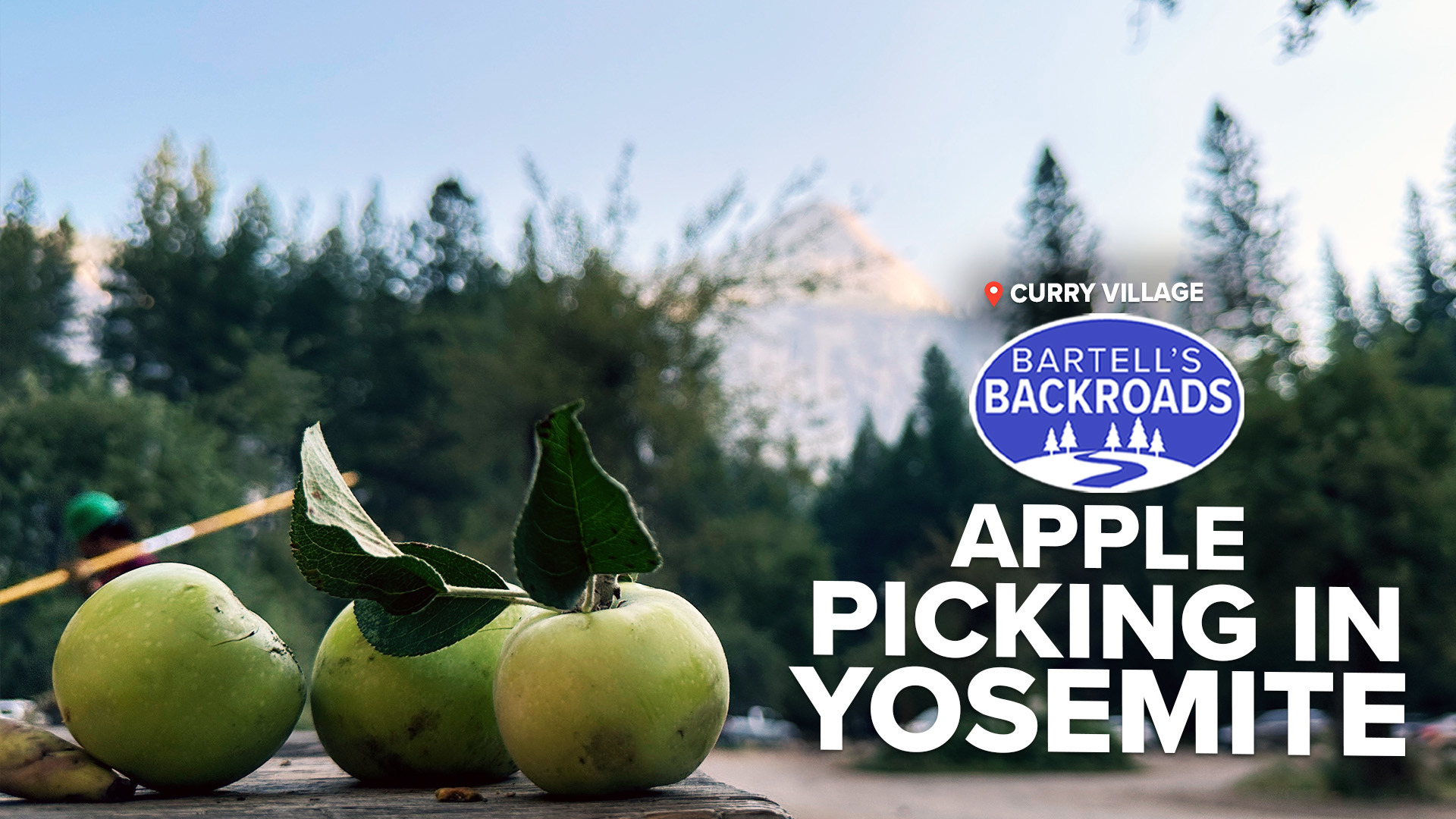YOSEMITE VALLEY, Calif. — No matter what time of year you visit Yosemite National Park, tourists are pretty much guaranteed to experience the grandeur of the stark mountains and stunning waterfalls. There is one day, just one day a year, when visitors are invited to experience all that grandeur while doing a little manual labor.
Just before the apples fully ripen at the historic orchard in Curry Village, park rangers enlist the help of campers to remove them from the trees.
“The trees were planted by people in the early years of the park, and these apples are a non-native food source for bears,” said park ranger and spokesperson Scott Gediman.
When Yosemite became a National Park in 1890, food for tourists was difficult to bring in. One solution was to plant apple trees.
“At the time that made sense because they were not close to a city and this provided fresh fruit here,” said Gediman.
The apples fed lots of tourists, but those apples also attracted and fed bears.
“The park is home to about 400 to 500 American Black Bears and with so many visitors, three million a year, bears are going to encounter people,” said Gediman.
From 1890 through the 1990s, bear encounters happened regularly in the park. At one time it was common to see tourists feeding bears but those bear encounters were not always friendly.
“Here in Curry Village particularly, we had three, four or five cars broken into a night by bears, and they caused hundreds of thousands of dollars in damage,” said Gediman.
Bears are so strong they can rip off car doors, so in the 1990s, the park started the “Keep Yosemite Bears Wild” program. The goal was to prevent bears from eating human food, so bear-proof food storage boxes were installed at campgrounds, visitors were fined for feeding wildlife and the orchards were picked clean before bears could eat the apples.
“The whole idea is that people and bears can coexist here in Yosemite Valley, and we've been tremendously successful. In fact, the bear incidence rate had dropped over 90%,” said Gediman.
Today, many of the apple trees are over 100-years-old and they don’t taste very good anymore. An easy solution to the bear-apple dilemma might be to cut down the orchards, but here in Yosemite the trees are considered part of the cultural landscape and they legally can’t be cut down.
“We do our best to manage the apples before they fall,” said Gediman.
The apples don't go to waste; campers are welcome to take home as many as they want. As for the bruised and bitter apples left behind, they are donated to a local pig farm.
Apple picking happens just once a year in Yosemite and the date is generally announced mid-summer, so keep an eye on the National Parks website.
MORE FROM THE BACKROADS OF YOSEMITE: The top five 'must see' waterfalls in Yosemite National Park.



















